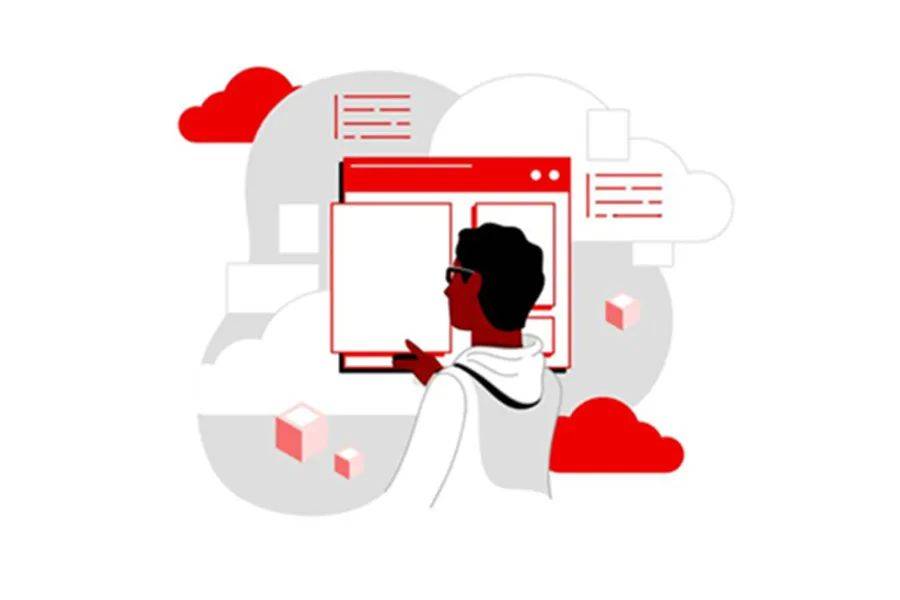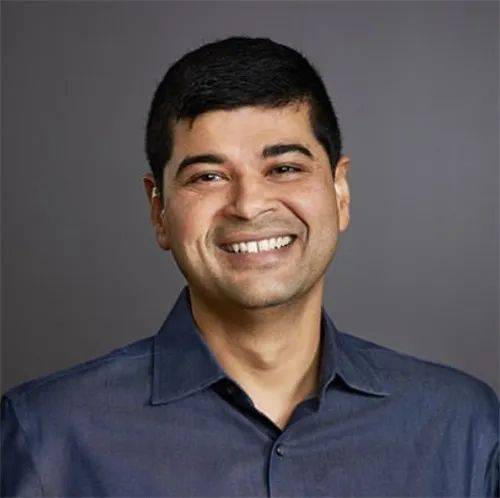
As an annual industry feast in the global open source field, the 2023 Red Hat Global Summit has arrived recently as scheduled.

Red Hat brings a global open source feast
At this summit, Red Hat released a series of new products such as the latest version of OpenShift AI and Ansible Lightspeed equipped with IBM Watson Code Assistant, and shared Red Hat’s views and opinions on the hot topics that media reporters are most concerned about.
Matt Hicks, president and CEO of Red Hat, said: "We are excited and looking forward to the future, especially in artificial intelligence and new technologies. We have announced some exciting new products, including OpenShift AI. However, to To achieve this vision, we also need to focus on efficiency, freeing ourselves the time and resources to invest. Therefore, the balance between developer operations and security efforts is critical."
“It’s almost impossible not to talk about artificial intelligence in meetings or conversations these days because it’s so ubiquitous. I couldn’t agree more. However, I want to emphasize automation. We heard from our customers about the importance of automation in this day and age. important role. We have made a significant investment in Ansible, the most popular open source automation community. To meet the needs of our customers, we launched the highly anticipated version 8 of Ansible. I am very excited about this and we are committed to To bring more value to users and customers through efficient automation, leveraging upstream and open source technologies," said Ashesh Badami, chief product officer at Red Hat.
Chris Wright, chief technology officer at Red Hat, said: "I'm particularly excited that I can see the summit resonating with our audience. We spent time focusing on developers and thinking about how to enable enterprises to operate with limited resources. Do more under this background. In this context, developer efficiency is crucial. We have done a lot of work in the backend community and established a development platform that can help enterprise developers access their development models, and we Committed to simplifying the connection process of distributed applications. Again emphasizing developer efficiency. As someone with an engineering background, I really enjoy the feedback I received today."

5G popularization promotes multi-cloud development
With the increasing popularity of 5G around the world, the Internet of Things, cloud computing and edge computing have also ushered in large-scale development opportunities.
Matt Hicks pointed out that Red Hat places the highest priority on the development of 5G, especially the impact on wireless access networks. “We are already seeing progress with RHEL being adopted on embedded devices and OpenShift being able to run efficiently on a single node. These efforts are based on the needs of telecom topologies and we work closely with strong partners and equipment vendors to We have built a series of core network infrastructure. We are full of expectations for the global popularization of 5G and believe that it will become the next important trend in the telecommunications industry."

【Red Hat President and CEO Matt Hicks】
Chris Wright pointed out that the birth of 5G is a major change in the network field. By providing higher bandwidth, lower latency, and more connection density, 5G will bring a lot of innovation to enterprise application scenarios. "Future 5G revenue growth is expected to come primarily from enterprise applications rather than the consumer market. Enterprise applications need to focus on applications that meet enterprise needs, and Red Hat has a large partner ecosystem that can provide applications designed specifically for enterprises. Applications. Through multi-access edge computing and OpenShift container platform, Red Hat can run network applications and enterprise-oriented applications, and even provide consumers with innovative application experiences in scenarios such as sports venues. This helps operators Gain a return on the huge investment required to build 5G networks. We see this as a manifestation of hybridization, building a smarter, more connected world by connecting data centers, edges and public clouds and leveraging IoT devices, Including smart cities and smart agriculture, this means huge changes and opportunities for Red Hat and companies in many industries."
Vehicle operating system and container
As we all know, Red Hat and General Motors have been collaborating on the development of in-vehicle operating systems. What progress have the two sides made so far? What role will containers play in the smart car industry in the future?
Chris Wright pointed out that smart cars can be connected to the network and are themselves very complex devices. Some people describe it as a "mobile data center." Red Hat's partnership with General Motors focuses on getting Red Hat's flagship enterprise Linux product into cars, which requires some technical work to ensure it is paired with the right hardware. Under this hardware architecture, many vehicles use processors based on ARM architecture and need to adapt to the size and space constraints of the vehicle. So far, Red Hat has made a lot of progress in this regard.
Also consider that the application of RHEL in vehicles can provide an underlying platform for entertainment systems, advertising systems, assisted driving and autonomous driving systems, and these systems have different levels of functional safety requirements. Therefore, introducing functional safety into traditional Linux distributions (such as RHEL) is a very important task. To this end, Red Hat is advancing technology that provides functional safety, an essential requirement for any in-vehicle solution.
Talking about how to run containers in vehicles or natively support containerization technology, Chris Wright revealed that Red Hat directly adopted Podman in the vehicle operating system (ROW) and also made two important improvements in OpenShift . One is to start with the wireless access network use case in the telecommunications field and streamline OpenShift into a version that can run on a single node and a single server (Red Hat calls it single-node OpenShift). These servers are usually of standard scale, and more Core and memory; secondly, Red Hat also launched MicroShift, which further reduces the footprint based on OpenShift and can run on smaller devices. It is a very important step to gradually transform RHEL into a form suitable for vehicle operating systems and be able to run containers.
"There is a huge ecosystem in the automotive industry, including numerous suppliers that provide products to OEMs. So we work with this huge ecosystem to ensure that the products we mention, whatever they are, operate in compliance Systems, edge-optimized Linux, or edge-optimized OpenShift and MicroShift, must be able to seamlessly integrate with the entire automotive ecosystem and meet the needs of the entire ecosystem." Ashesh Badami added.

【Red Hat Chief Product Officer Ashesh Badami】
The future of generative AI is exciting
The global popularity of generative AI in 2023 has made artificial intelligence and AIGC an unavoidable focus topic in every technology event, and the 2023 Red Hat Global Summit is no exception.
Matt Hicks said that the most exciting thing about generative AI is that it stands out from traditional deep learning capabilities and realizes the evolution of machine learning. Compared with traditional AI applications, the biggest change in generative AI is that it no longer requires users to label data for training. Instead, it can gradually train data on large models and some specialized models. “Going forward, we’re going to see a lot of open source-based innovation. We want to make sure we position ourselves well to take these innovations into the enterprise. In terms of leveraging generative AI and applying it to our own products, we’re already Practiced in some Red Hat products (such as Red Hat Insights). Generative AI will allow us to conduct more experiments and data training in a more efficient way, resulting in richer applications, and will also be used in the future. Do it in a faster, more exciting way."
Chris Wright believes that generative AI is a very important progress. Since the advent of deep learning, the development of large-scale language models and generative AI has attracted much attention. Over the past few years, deep learning has required data scientists to have deep expertise to build models. However, today transfer learning based on large language models and basic models provides more opportunities for enterprises. Users no longer need to perform the arduous work of labeling data, but can leverage smaller, more focused data sets for training and customization for wider application in enterprise environments. This change has dramatically altered access to technology, resulting in major transformations.
"In an enterprise environment, we cannot rely solely on models like ChatGPT or BART to ask and answer questions, because their answers, although complete in form, are not always accurate. So we focus on integrating these technologies into our platform. The first example we talked about today is the Ansible Playbook developed by Red Hat in partnership with IBM. Ansible Playbook can use natural language to generate executable operation guidance, and we have also expanded this technology into our product portfolio, Especially on the OpenShift platform. Taking Kubernetes as an example, when you start an application, you can use a YAML file to describe its deployment. Generating YAML files to deploy applications is a further expansion of our product portfolio. We attach great importance to OpenShift Runtime operations of applications running on the platform, so we use operators (Operators) to manage applications. In the future, we will further utilize generative AI technology to generate operators to help operation and maintenance personnel and developers work more efficiently Leveraging our product portfolio. This is just one of the many ways generative AI is integrated into our product portfolio, and we will continue to explore more possibilities in the future." Chris Wright said.

【Red Hat Chief Technology Officer Chris Wright】
“We are in an exciting time where innovative applications are critical regardless of the environment. Whether customers are innovating naturally or consciously emerging from economic challenges, we are seeing a lot of excitement surrounding open source. innovation, and we love to be that bridge. So going forward we're going to be focused on realizing the potential of this technology, whether it's by working with us to use AI in specific areas to enhance your capabilities in Ansible, or as a developer and Better performance in DevOps, or success in implementing some artificial intelligence innovations. This is a very exciting time. So we will fully apply these technologies in different industries and different application scenarios, and we will customers to spend this time together. Now is a good time for Red Hat and the open source space." Matt Hicks said.
The above is the detailed content of Red Hat Global Summit: Generative AI is exciting, and the open source field is facing good times. For more information, please follow other related articles on the PHP Chinese website!




